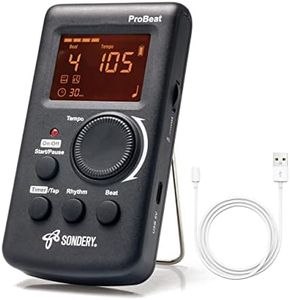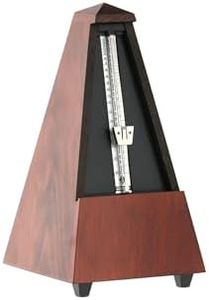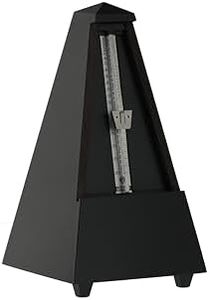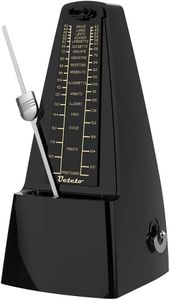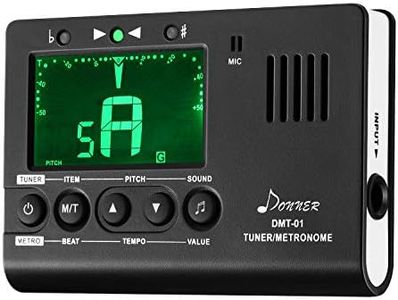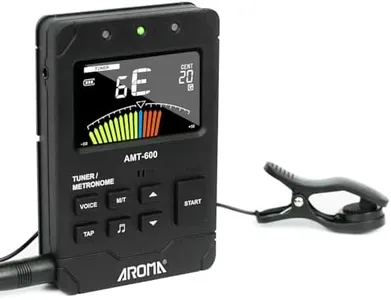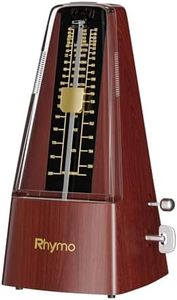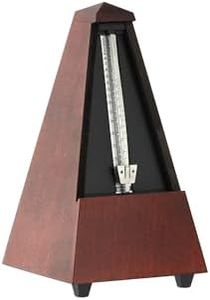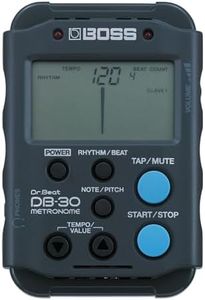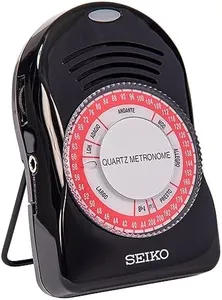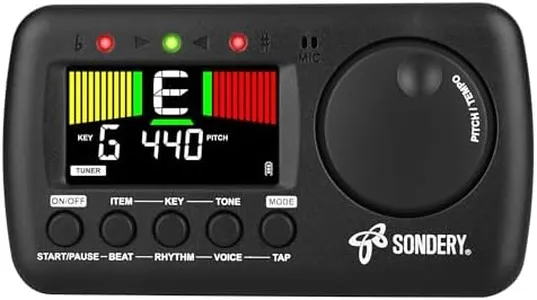10 Best Metronomes 2025 in the United States
Our technology thoroughly searches through the online shopping world, reviewing hundreds of sites. We then process and analyze this information, updating in real-time to bring you the latest top-rated products. This way, you always get the best and most current options available.

Our Top Picks
Winner
Sondery Digital Metronome Rechargeable English Vocal Counting with Timer Function for Piano Guitar Drum and All Instruments
Most important from
1787 reviews
The Sondery Digital Metronome offers a wide tempo range from 40 to 208 bpm, catering to most musical needs. It includes three sound options and vocal counting, which can be particularly useful for beginners who need clear audio guidance. The metronome also features volume control through a loud speaker, ensuring it can be heard during practice, and it includes an earphone jack for quiet sessions, making it versatile for different environments.
Visual indicators like the LED light provide an additional cue to help keep time, which is useful for practicing in noisy settings or during live performance. The metronome supports multiple rhythm patterns, allowing for diverse rhythm training. Portability is well addressed with its small size and light weight, making it easy to carry around. Rechargeable via USB, it eliminates the need for frequent battery replacements, which is convenient.
Additional features like a timer function and tap tempo enable customized practice sessions and ease of use. However, the plastic build might not feel as premium, and users who prefer tactile feedback might find the buttons and knobs less satisfying compared to traditional metronomes. Also, while the vocal counting is a great feature, it might not be indispensable for advanced users. The Sondery Digital Metronome is an excellent tool for musicians who need a reliable, portable, and versatile metronome with modern features.
Most important from
1787 reviews
Wittner wooden metronome with bell 811M mahogany finish
Most important from
328 reviews
The Wittner wooden metronome with bell 811M is a beautifully crafted instrument that combines classic design with functionality, making it a great choice for musicians who prefer a traditional metronome. Its mahogany finish adds an elegant touch, making it not just a tool but also a decorative piece for any music space. A standout feature is the built-in bell, which is useful for marking the downbeat, helping users maintain rhythm during practice. It operates quietly and is easy to set up, catering well to those who value simplicity in their practice routine.
In terms of functionality, it has a good tempo range, allowing users to adjust the speed according to their needs. The visual indicators are helpful for those who may want to follow along without auditory cues. However, it lacks some modern features like multiple sound options or various rhythm patterns, which could limit its appeal to advanced players looking for more variety in their practice. Additionally, the absence of volume control might be a drawback for users who need to adjust sound levels according to their environment.
At 1.05 pounds and compact dimensions, it's relatively portable, making it suitable for musicians on the go or those who wish to practice in different locations. Despite its solid build quality, the metronome is not the smallest option available, which might deter some users who prioritize extreme portability.
Most important from
328 reviews
Soundbrenner Core 2, Music Practice Companion for All Musicians with Vibrating Metronome, Practice Tracker, Chromatic Tuner, Decibel Meter and Smart Watch, Best in Show at NAMM (Jet black)
Most important from
430 reviews
The Soundbrenner Core 2 is a modern metronome designed to suit a wide range of musicians, combining traditional functions with smart features. Its standout strength is the vibrating metronome, which lets you feel the beat rather than just hear it. This can be especially helpful when playing in noisy environments or for those who prefer tactile feedback. You can set any rhythm without limits, and it syncs with other devices, which is great for group practice or complex setups. The device also connects to digital audio workstations, though this feature is still new and may improve over time.
In terms of tempo range and rhythm options, the Core 2 handles them flexibly, though the focus is more on vibration than sound clicks. It has volume control through vibration intensity and sound, but the main appeal is its silent mode. Visual indicators come in the form of a sleek watch display, which also doubles as a smartwatch showing notifications and controls for music playback—handy for multitasking musicians. Portability is strong: it’s lightweight, compact, and comes with a comfortable strap plus a carrying pouch, making it easy to wear or carry around. The battery life supports several days of normal watch use, though metronome playback lasts a few hours, which should be enough for typical practice sessions. It’s also water-resistant, adding some protection for on-the-go use.
Additional tools include a chromatic tuner and decibel meter, helping musicians tune precisely and monitor volume to protect their hearing. The practice tracker feature encourages consistent use by analyzing and displaying progress, which can boost motivation. On the downside, the Core 2 might be pricier than basic metronomes and could have a learning curve for those not used to smart devices. Also, its metronome relies mostly on vibration rather than loud sound clicks, which might not suit everyone’s preference. The smartwatch features are useful but may be unnecessary if you only want a simple metronome. This product is ideal for musicians seeking a versatile, wearable metronome with extra practice tools and smart features. It’s particularly good for those who want silent, tactile tempo keeping and don’t mind a bit of tech complexity.
